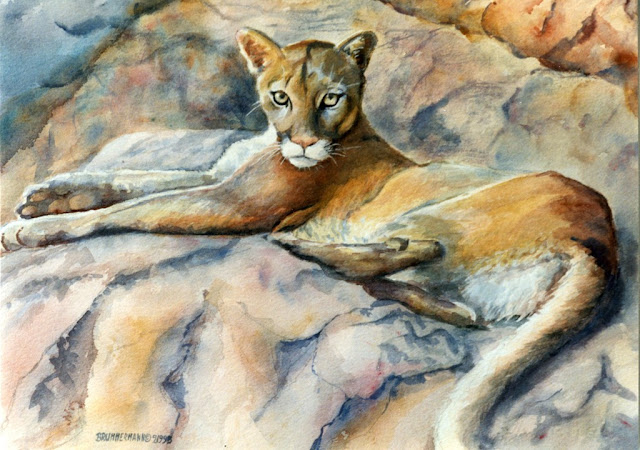In June when Saguaro fruit are ripe, ants come to feast on them and Horned Lizards emerge from hiding to feast on the ants. When I posted my first image of a juvenile Regal Horned Lizard (Phrynosoma solare) to the photo gallery of the Arizona Star and sloppily called it a Horned Toad, Doris Evans, a teacher and long time Arizona Sonora Desert Museum docent corrected me right-a-way. We have become a good friends since then.
So: it's a lizard, of course. Even if he's short and round and waddles a little bit like his neighbors, the Sonoran Desert Toads, the scaly skin and his complete independence of water mark him clearly as a reptile. See his regal dragon profile above! His English name 'regal' and the Latin 'solare' (sun-related) both refer to the full crown of spikes of our Sonoran Desert species.
 |
| Photo from the AZ Star Gallery (Photographer's name will be added) |
After hatching, the little ones are on their own. They are vulnerable to many predators, so the large clutch numbers are not excessive.
 |
| Photo by Collins L. Cochran who allowed me to use it |
Extremely spiky scales make it difficult for predators to swallow the lizard whole. Smaller youngsters do get gobbled up in numbers by voracious Roadrunners and hungry Kestrels.
In addition to being spiny, the fully grown lizard, when threatened, makes himself very flat and wide. I have been able to rescue several from our Husky, who is a terrible predator constantly prowling for extra food, because she just couldn't get a grip on the flattened disk.
None of those horned lizards that the dog attacked and even one that she retrieved in her mouth used the defense against canines described in literature: attacked horned lizard are said to spray 'blood' from their eyes - as far as a foot! I found this impressive video.
 |
| Illustration in the book 'Horny' by Emery and Le Blanc 1968 |
A well aimed squirt of any fluid as shown in the illustration above might scare off most inexperienced canines, but I still suspect that the spray isn't really just blood.
 |
| Photo by Bill Gorum |
 |
| Photographer Dave Beaudette: Adult, squirted blood from its left eye when I removed it from the road, Las Cienegas National Conservation Area, Pima County, AZ, 18 June 2009 |
PS: Eldon Braun just sent me the paper of a study on the composition of the ejected blood: It is just about identical to the systemic blood in hematocrit, osmalilty, sodium and potassium content. But coyotes reject food laced with the ejected blood, but not if systemic blood is mixed into the food.
By far the most successful and much less costly protection of the horned lizard is his amazing camouflage. His color and pattern brake up his shape and blend with the sandy ground. Even the spiny scales look just like sharp edged rocks, and the middle stripe that of this individual echoes the dead creosote twigs so successfully that I kept losing him in plain sight, specially when he moved around in his typical stop-and-go-and-freeze pattern of motion.
His eyes are shaded under heavy ridges and often half closed, so they don't draw attention to him either. In his usual pose the body is pressed against the ground and a flaring fringe of spiky scales along the sides eliminates any cast shadow. If he has to straighten up, the light color of the underside acts as counter-shading that reduces his optical three-dimensionality from above (and most of his predators are taller than he).
In this last photo, he abandoned his cryptic behavior for a moment. At very high temperatures, all our lizards minimize the contact with the hot ground by standing high on their legs and even lifting their toes off the ground. But the horned lizard also uses this pose as a threatening bluff when a predator (probably my camera in this case) molests him too much. (Note how the cast shadow now betrays the lizards location!)
 |
| Watercolor by the author of a Regal Horned Lizard feeding on Harvester Ants. |
Literature: Horned Lizards, Unique Reptiles of Western North America by Wade C. Sherbrooke, publisher: Southwestern Parks and Monuments Association 1981
















































